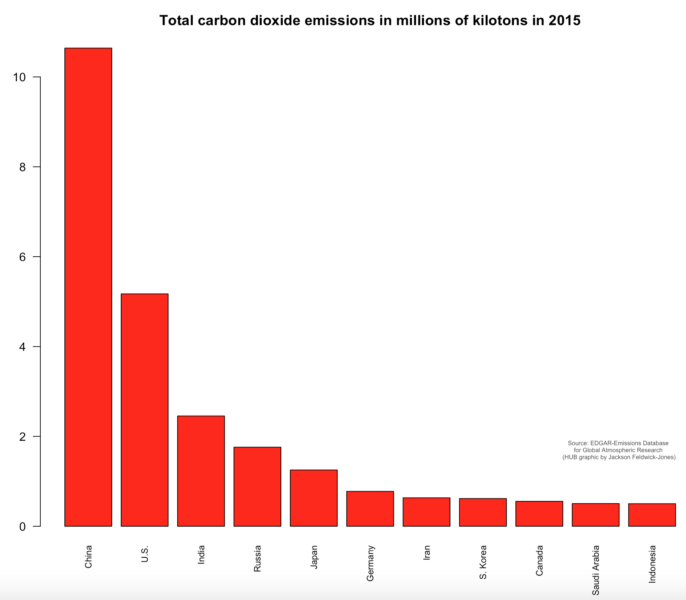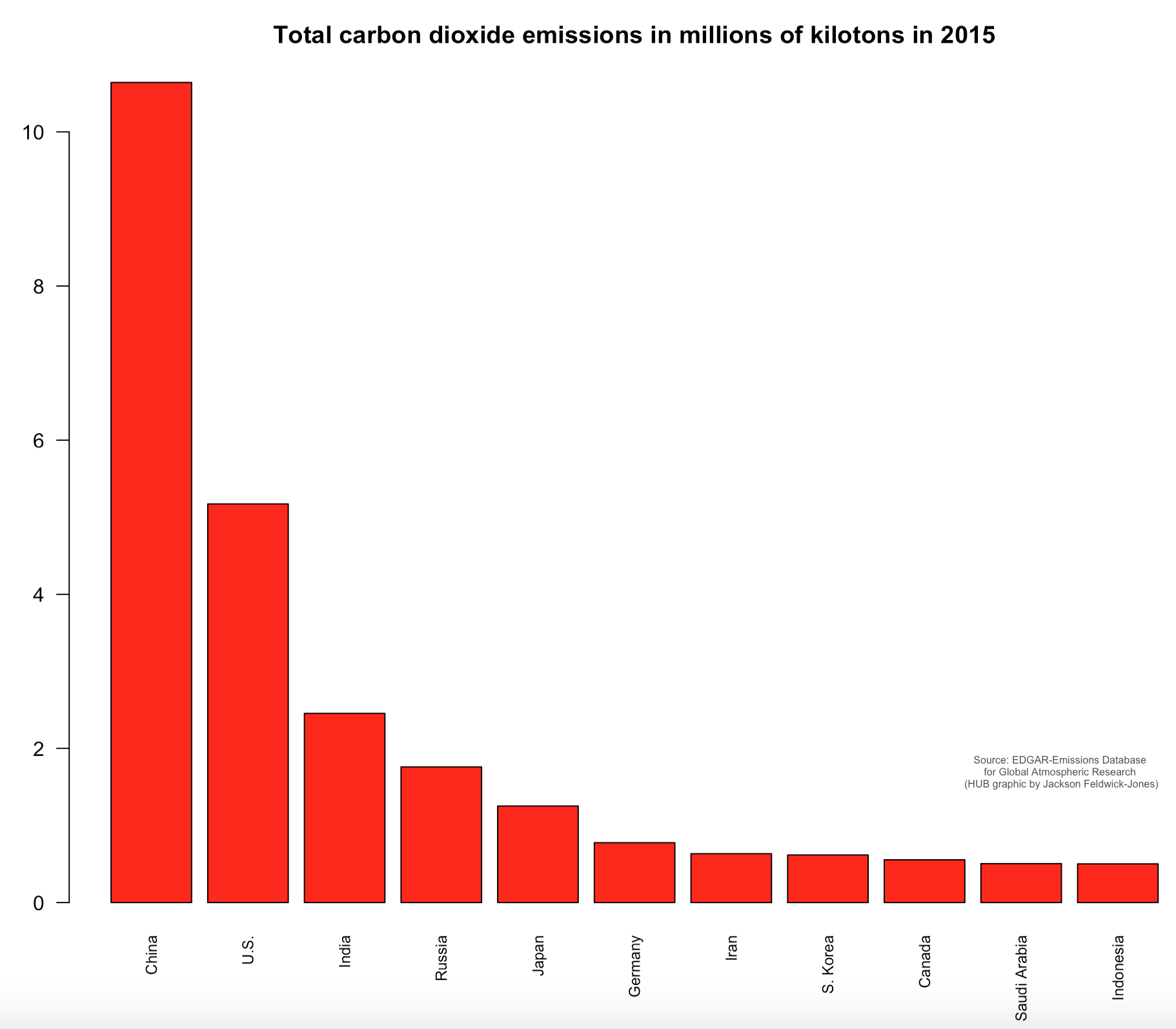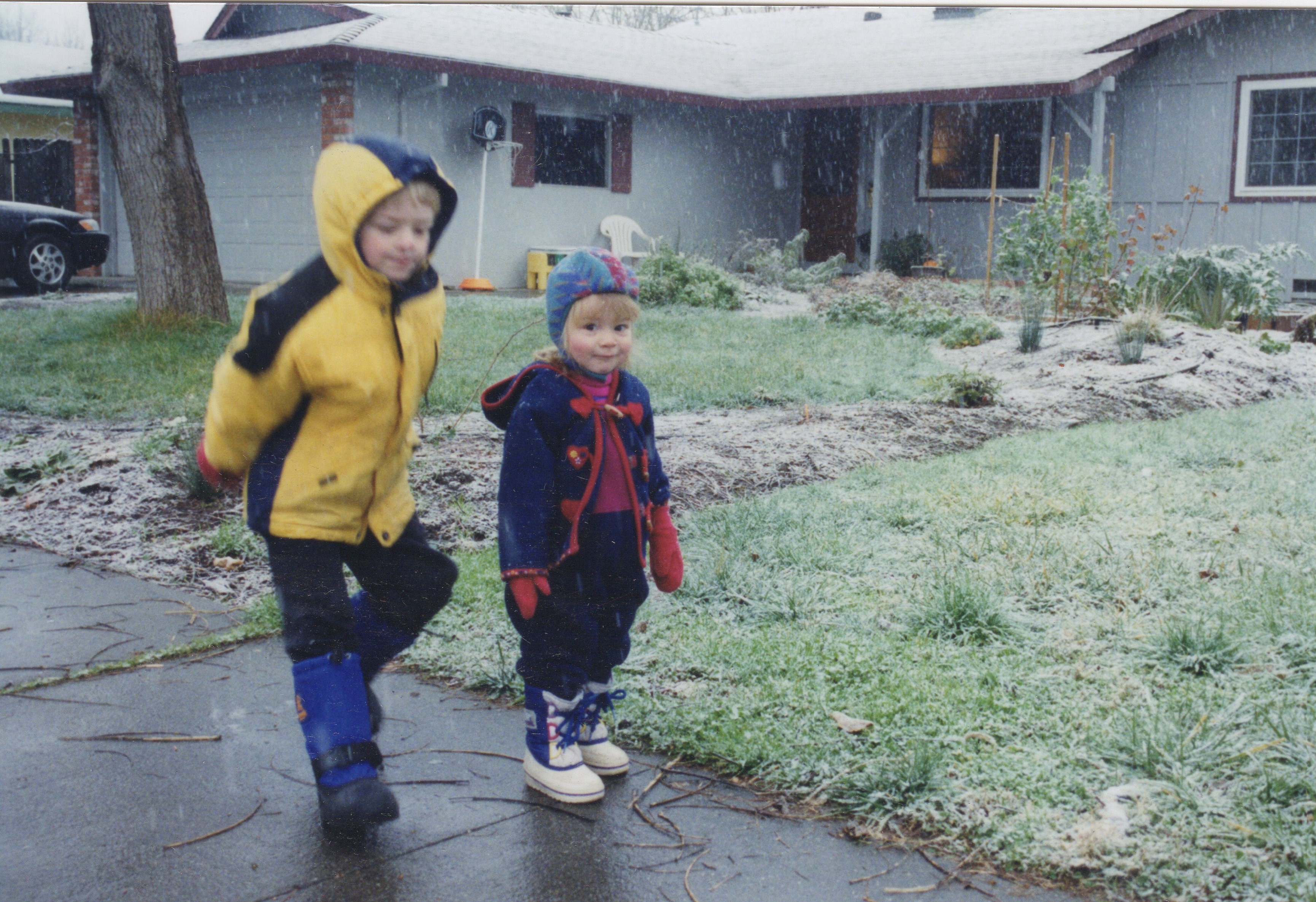Looming climate change threatens Davis

By Jackson Feldwick-Jones,
BlueDevilHUB.com Staff–
If somebody said Davis, California could be like Phoenix, Arizona in 100 years temperature-wise, you might think they were crazy. Phoenix is surrounded by a desert and is one of the hottest cities in the world, but UC Davis Environmental Science and Policy professor Mark Lubell said that this is plausible if the higher trajectory projections turn out to be correct. Climate change’s ramifications are gargantuan.
If global temperatures rise by 2℃, which could happen as early as the 2050s, according to the United States Environmental Protection Agency, 130 million people worldwide are in danger of displacement because of sea-level rise. But 2℃ growth is considered a goal; if temperature growth is as high as 4℃ (which Climate Central describes as “a business-as-usual scenario”) then 470-760 million people are in danger of losing their land to rising oceans.
Sea-level rise is already affecting the United States. For example, many islands are shrinking, leading to immigration from these islands to other countries, including to the United States.
“A huge contingent from the Marshall islands now lives in the United States. I believe there’s a big community of Marshall Islanders in Arkansas,” Todd Miller said.
Todd Miller, author of the book Storming the Wall: Climate Change, Immigration, and Homeland Security, is one of the leading experts in the world on the issue of border securitization, and in his book, he connected the issues of border security policy with climate change.
“[We must be] anticipating that a lot of islands will become uninhabitable, that people can no longer live and survive on the islands. Something’s going to happen, people are going to have to move,” Miller said.
These individuals, sometimes referred to as “climate refugees,” almost universally lack legal recognition.
Immigration is caused by number of reasons, but “climate change is exacerbating a problem that was pre-existing,” Miller said. A search for economic opportunity is one the biggest catalysts for migration, and climate change often makes this worse. Miller gave an example of a Mexican farmer forced to compete with American agribusiness because of NAFTA, but now the farmer’s agriculture is even less lucrative because of the negative effects of climate change, basically forcing them to move.
Sea-level rise has also directly impacted the United States and will only continue to do so. The United States Geological Survey estimated that from 1932 to 2000, the state of Louisiana lost about 1,900 square miles, about the area of Trinidad and Tobago, a country of 1.4 million people.
A UC San Diego report led by Daniel R. Cayan titled “Climate Change Projections of Sea-Level Extremes along the California Coast” predicts that the range at which sea-levels will rise by the 2070-2099 period is 11 to 72 centimeters. According to Climate Central, a rise of 50 centimeters would cause flooding which could submerge the living space of thousands of people in the Bay Area alone. Those displaced people would have to move, some of whom may move into Yolo county.
“Davis could have to make room for people who are relocating and that would put strain on the city,” junior Ruthie Mitchell said.
Mitchell is a member of the Environmental Club at Davis High and thinks that the potential of mass displacement to be a “scary thought.”
“Sea-level rise is going to one of our most costly issues,” Lubell said.
He added that rising ocean levels are likely to cost California hundreds of millions of dollars. He recommended that seawalls and levees be built where needed to help prevent utter catastrophe.
“The occurrence of extreme events, relative to current levels, follows a sharply escalating pattern as the magnitude of future sea-level rise increases,” according to the UCSD report. This means that while sea-level rise itself is a threat, it also has literally disastrous consequences.
Professor Vinod Thomas, in an article for the Brookings Institute said “global warming is exacerbating changes in temperatures and precipitation, making countries more disaster-prone than ever.” In fact, natural disasters have severely impacted the United States before, and if the frequency is only increasing this is even more concerning. For example, according to researchers at Hunter College, Edwin Melendez and Jennifer Hinojosa, 2017’s Hurricane Maria will lead to 470,335 people leaving Puerto Rico in the coming years, most of who will migrate to the American mainland.
In the same Brookings Institute piece, Thomas said that worldwide for every $100 spent on assistance, only 40 cents goes to disaster risk mitigation. Thomas argues the budget for disaster prevention needs to be increased, especially if these once-in-a-hundred-years events are happening every few years now. Being more prepared is also good for business; Thomas said in the article “New York’s disaster preparedness and prevention efforts after Hurricane Sandy in 2012 boosted confidence among investors and businesses, leveraged private investments, and helped stimulate growth.”
But what about California?
“[There will be] longer and more frequent droughts and also hotter and larger wildfires [in California],” Lubell said.
The dangers of fires and droughts have been a central issue in California recently, with massive fires in California and drought conditions across the state. Recent fires in the state has lead to displacement of many people. .
Jack Diakon is a junior at Vintage High in Napa who was forced to move when one of the recent large California fires burnt down his house.
“It was kind of weird, it was hard to sleep. It was stressful, anxious,” Diakon said about the experience of not knowing what is going to happen.
His old house is currently being rebuilt, but as these catastrophes happen more frequently, there may eventually be a point where reconstruction is impossible.
Droughts will cause increased economic hardship especially upon the vast agriculture industry in California, which is a huge part of the Yolo County economy.
“If the droughts become more frequent, they’re going to have a problem getting water. Some places are already struggling with that. In some places agriculture may [no longer be] viable. The more likely case is there’s going to be a pretty large economic cost,” Lubell said.
Farmers will have to adapt if they want to survive the changing times. According to a recent UCD report, the 2011-2017 drought cost California agriculture $603 million and 4,700 jobs in 2016 alone.
The rain and snowfall patterns in California have also changed because of climate change, and will continue to go more askew.
“[Now] it starts snowing later in the year and stops snowing earlier in the year and then the snow starts melting earlier in the year so the timing of the spring runoff is earlier and that’s a big problem because […] the way our reservoirs are being operated is becoming out of sync with the timing with the water runoff,” Lubell said.
The skiing industry will die out in California except in the southern Sierras because of the lack of snow, Lubell predicted.
Miller does not think the United States is doing its due diligence to prevent global warming and its consequences.
“It seems like from a federal government point-of-view that it’s very slow and cumbersome and not really with a urgency that’s necessary,” Miller said.
However, Miller said that some grass roots organizations and smaller scale governments are making impressive strides in improved environmental policy.
“It’s kind of disappointing how policy makers are influenced by big corporations that deny climate change,” Mitchell said.
Lubell said that while California is being more “aggressive” than other states involving climate policy, “without the rest of the country and without the rest of the world doing a lot on emissions it’s not going to make a huge deal on a global perspective.”
According to Miller, the United States is not prepared for the internal or international displacement caused by climate change related disasters. He cites the “ad-hoc”decisions for relief following Hurricane Katrina to prove this point about domestic displacement. Internationally, the United States is not ready for more immigrants, as shown by the already existing political pandamonium involving immigration.
Those two different types of displacement (internal and international) eventually may become practically the same, because if internal migration becomes a large enough issue, Miller thinks “It’s possible that movements of people might be policed as if they are crossing international borders, within the country.”



Nice job Jackson! I’m glad you learned so much and you’re communicating to the youth about these problems. I should amend my statement about costing California hundreds of millions and replace it with some multiple billions of dollars range….very hard to estimate. Doesn’t even include the rest of the United States or the world. There is a good book called the “The Water Will Come” if you want to learn more about sea-level rise. Of course, Davis is a fairly “democratic” and liberal community so many people already accept the reality of climate change. Another important way to make a difference is to personally reach out to climate skeptics and have a conversation with them.